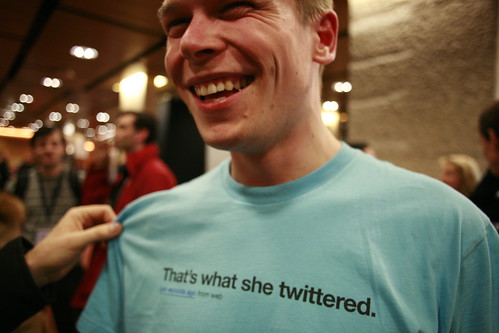In 1999, in an attempt to defeat the morning ratings Cerberus that was Katie Couric, Matt Lauer and Al Roker, ABC countered with an unusual move:
They built a studio in Times Square.
If you’ve been to Times Square in the last decade, you know which one I’m talking about. Other networks have studios there, too — MTV’s ‘TRL’ studio among them — but the ABC studio stands out. Their wrap-around ticker is the reason why.
Around the edges of the building is this wavy, double-deckered contraption that was Disney Imagineered specifically for the studio. Short news bites scroll across the ticker 24 hours a day.
Now I want you to imagine going to Times Square. You’re standing in the middle of the busiest intersection in the busiest city in the world. There are thousands of cars streaming past you, thousands of people walking past you. A giant Coca-Cola bottle is magically refilling and emptying itself, while a dozen Jumbotrons flash ads nearby.
The distractions are endless.
Now look over at that double-decker ticker at the ABC studio, and consider this: you’re standing there, all the world whizzing past, and you’re watching words scroll past you on a screen.
In a way, this is a lot like how Twitter works.
❡❡❡
The problem with the Internet is not a lack of content. In 60 days, according to YouTube’s latest numbers, more video is uploaded to the site than was created by ABC, CBS and NBC in the past 60 years. There are 400 million active Facebook users, and more than 75 million Twitter users.
But that’s before you factor in mainstream media sites, blogs and — most massive of all — e-mail.
All of these sources are creating content [1. Which I’ll simply describe as words, pictures, sounds or some combination of the three.] The problem is — and I am by no means the first person to suggest this — a shortage of filters to sort through all that content.
There are only two filters that most consumers use to find stuff on the Internet:
1. People you know
2. Google
This is kind of a problem.
❡❡❡
Mark Cuban said it well at South by Southwest: it’s not the production of Internet content that’s expensive — it’s the marketing.
If you’re creating something on the web, you’re up against an infinite amount of content.
But that’s not the case with Twitter. On Twitter, it’s even harder to stand out, because the amount of content that Twitter produces each minute is astonishing — the site records more than 50 million tweets per day, at last check — and the filters for Twitter are even less developed.
❡❡❡
What this is all coming back around to is this notion that it’s even possible for a brand to stand out on the Internet.
It is.
But it takes a really impressive effort to pull it off.
So consider the example of Nike. The World Cup starts in exactly 21 days, and Nike’s heavily invested in some of the biggest soccer stars in the world, including Wayne Rooney, Cristiano Ronaldo and Didier Drogba. So Nike did what it always does for a big soccer tournament: they pulled out a massive marketing campaign.
What they came up with — and I’ve embedded it below — features the biggest names in the soccer world. Plus Kobe Bryant, Homer Simpson and Roger Federer. And some awesome footage from around the globe.
This afternoon, over at one of my favorite soccer blogs, I saw the ad for the first time. I clicked through to the YouTube page. The video had only 300 views.
But below the video, there was an unusual note: the video had been “unlisted” on YouTube, which meant that it wouldn’t show up in search results or on Nike’s YouTube channel. The URL was secret; unless someone pointed you to it, you’d never know it was there. It’s the YouTube equivalent of Harry Potter’s Platform 9 3/4. Either you know it’s there and can get to it and experience it, or you can’t. You’re not going to be able to just stumble upon it unless someone else shows it to you.
What Nike was saying when they unlisted the video was, To prove how loyal our fans are, we’re going to make it as hard as possible to find the ad. We’re betting that the video will go viral anyway.
So I tweeted the link to the video and went to take a nap. When I woke up, I saw that my initial tweet had gotten a few retweets. I went back to the YouTube page for the spot to see how it was doing.
It had over 97,000 views.
What the hell happened?
❡❡❡
I went to bit.ly to see if they could offer insight. They did. The link I’d tweeted — http://bit.ly/czPBdf, which redirected viewers to the YouTube video — had been clicked on over 7,000 times. [2. To be clear: I was not the first person to tweet that specific bit.ly link, though if I was video view no. 300, I must’ve been among the first.] 114 of those clicks came from twitterers, some tweeting in English, Portugese, Spanish and even Korean.
But 5,700 people had shared the link on Facebook. Another 1,100 had “liked” the link on Facebook.
So I followed the trail of links.
Nike has only 8,000 followers on Twitter. On Facebook, they’ve got over 600,000 fans.
And how did Nike mobilize that Facebook audience to action? They’d invited them onto the virtual red carpet.
On May 15, they announced that they’d be screening the video on May 20 at 6 p.m. They invited their fans to watch.
On May 19, 80,000 people had RSVPed on Facebook to watch. On the morning of May 20, that number was 108,000. At launch time, 120,203 fans had confirmed themselves as guests.
So what happened? Nike leaked the video at the appointed time. People showed up to watch it. And then people starting sharing it. And sharing it.
And suddenly, an invisible link on YouTube had 100,000 views in a matter of minutes. [3. Some 48 hours later, the video is closing in on 4 million views. As for the initial link I tweeted: the number of times it’s been tweeted hasn’t changed. But an additional 125,000 people have shared the video on Facebook, and another 70,000 have liked it.]
And the best part for Nike: these were people who actively wanted to watch the video — a video that, I should add, is actually a paid endorsement for shoes and soccer balls. These were people who, technically, were going out of their way to share the video with their friends.
But it didn’t feel like those people were going out of their way. When the barriers to sharing are as low as a click, how could you?
❡❡❡
A few months ago, my dad was asking me about something I had written. He thought more people deserved to read it.
“But I thought you put it out on Twitter,” he said.
I did, I explained. To my 200+ followers. A few clicked; a few retweeted it. And that was it.
“Doesn’t being on Twitter doesn’t make something viral?” he asked.
No, I told him.
But I don’t think my dad’s alone in his confusion about how something gets exposure on the web. He’ll notice content when it rises to the top. He’s rarely aware of that content’s journey to that point.
So here’s the takeaway:
Twitter works best in tandem with an actual event. An election, an inauguration or a big Congressional vote. The Super Bowl. A conference or a class. Anything, really, in which there are large amounts of people gathered and discussing/watching/listening/reacting to a single thing. That’s when you really get to see Twitter at it’s best, because that’s when great discussion is happening in real time.
But when it comes to sharing content, Facebook is still tops. Facebook taps deeper into those Dunbar circles. Twitter tends to hit the outer edges.
If you’re standing in Times Square, Facebook’s that friend from New York who says, “Hey, see that thing over there? That’s what you’re supposed to be looking at.”
Until Twitter creates the filters to replicate that experience, people will still turn to Facebook first to share.
But they are sharing. And for any brand, that is very, very good news.














